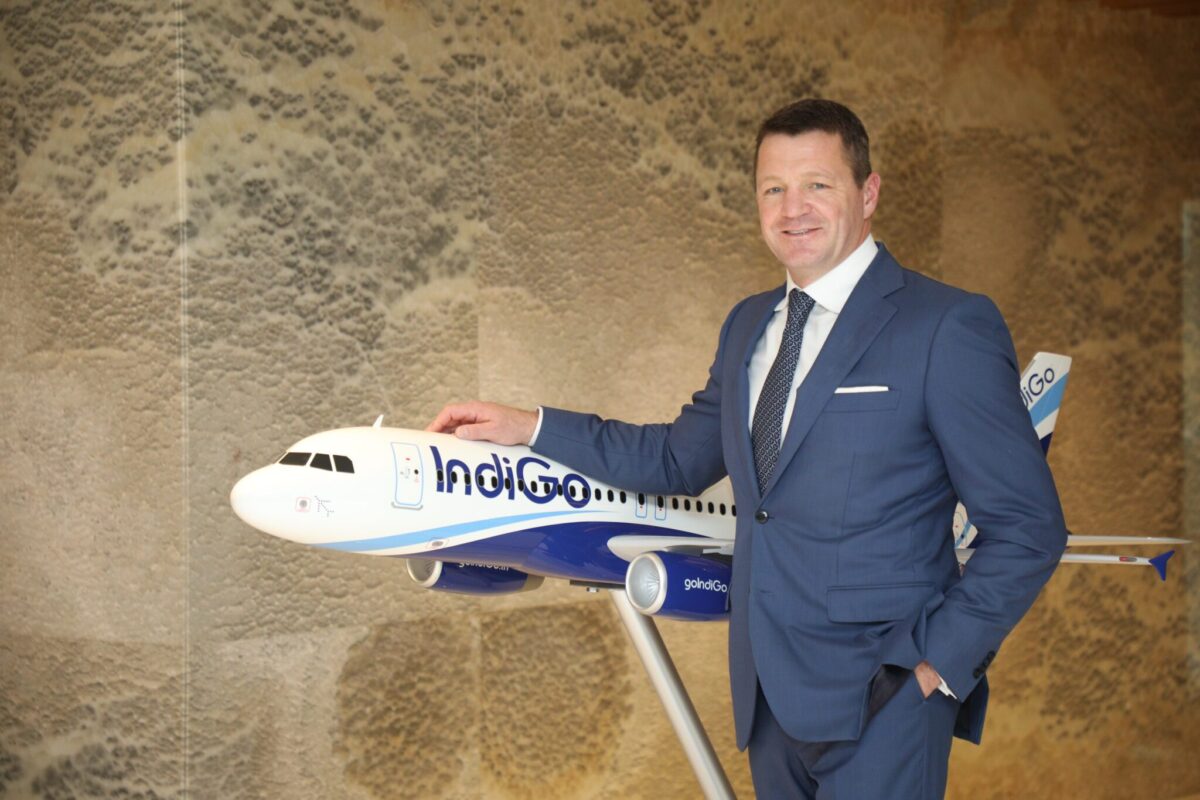IndiGo CEO Pieter Elbers on New Business Class, Loyalty and Becoming a ‘Global Aviation Player’

Skift Take

Leaders of Travel: Skift C-Suite Series
What are the top trends impacting hotels, airlines, and online bookings? We speak to the executives shaping the future of travel.IndiGo CEO Pieter Elbers told Skift that the airline's new business class product would stay faithful to the IndiGo brand and that it's the right time for an “IndiGo-like product” to serve the next wave of Indian air travelers.
“We now have a whole generation coming up that has never flown business class. Similarly, years ago there was a whole generation in India, that’d never taken a plane, who then became our first-time fliers,” Elbers said.
Elbers noted that as India, its economy and the consumers are changing rapidly, IndiGo is building an approach to address those changing customer needs.
In the latest of our Leaders of Travel: Skift C-Suite Series, we sit down with Elbers to find out his plans of turning IndiGo from what he calls a "domestic giant" into a "global aviation player."
Growth and Indian Economy
Skift: How dependent is IndiGo's expansion on the India story? If the economy disappoints contrary to the current expectations, can your expansion plan still succeed?
India is largely underserved in terms of number of planes and seats per capita. If the economic growth slows down, aviation will still grow, perhaps at a different percentage, as long as infrastructure and airports continue to be built. With our leases we have very good flexibility and almost continuous evaluation of what our capacity should be.
We have a continuous influx of planes, more than one per week for the next decade. However, our net fleet depends on how many planes we flush out. When supply chain challenges began a year and a half ago, which grounded some planes, we managed to maintain our capacity as promised. Through a whole range of mitigating measures, we've been able to deal with external circumstances to keep our growth in place, it can also be the other way around if circumstances so dictate.
Middle Eastern Carrier Alliance?
You have a domestic market share of over 60%. However, international operation is a totally different beast. Would you ever consider an alliance with a Middle Eastern carrier?
Internationally, the accumulative share of Indian carriers is significantly lower than the share of foreign carriers and clearly given the fact that the market is in India itself, that's a bit odd. We are starting to build on getting our share in those markets and a lot of the recent initiatives are helping us regain that.
When it comes to alliances and partnerships, we work with 7 foreign airlines. This gives them access to the market in India and it gives us an opportunity to create brand awareness and get additional passengers. For partnerships and collaborations, we have a pragmatic approach. I'm not ruling out anything, depending on how the business proposition would look like for both parties.
Open Skies vs. Protectionism
What is your take on open skies vs protectionism?
The open skies agreement between the U.S. and Europe took years to establish. The Europe-U.S. example is a good one because these markets were mature and well developed. Both these markets had grown to a certain stage and airlines on both sides were ready to take the next step in development.
So, when open skies was announced, it was helpful to start creating stronger alliances and joint ventures. In general, one would try to create a regulatory framework serving the needs of the customers and the airlines. For India, it will evolve over time, depending on the time and markets. When an open-skies offers opportunities for both sides, why not? But when that's not so, you’d probably need a more tailor made and fine-tuned approach.
Multiple-Hub Risk?
At KLM, you had one hub to work with (Amsterdam). IndiGo has multiple hubs. Is there a risk that IndiGo won't be able to build one good hub, because it has to spread its planes across multiple hubs?
A country of the size of India and its population would justify multiple hubs. IndiGo serves different markets from different hubs: when we started Nairobi flights, we did it out of Mumbai and when we started flying to Central Asia, we did it out of Delhi. The geographical size of India is a fantastic opportunity for us.
But yes, we need a lot of planes for that. And that's precisely why we ordered so many aircraft. We are building a future network - more complex and much more exciting than what we had. We start to add the XLRs from next year, which means we can reach the shores of Europe, we can reach further into Asia and when the A350s come in, we can reach many corners of the world from any city in India.

An IndiGo Loyalty Program
You’d earlier mentioned about a loyalty program. When you do develop it, will it be optimized for short-haul travelers, or will you make it more appealing to long-haul passengers?
Last year we announced that we will enhance our loyalty program The existing Ka Ching Card is more like a co-branded credit card than really a loyalty program. Clearly the loyalty program is something that should be part of our building blocks, we’ll reveal more when we have something tangible to announce.
Our network today is domestic heavy, this won’t change in the short term. I think we have a wonderful opportunity in the international regional routes and longer regional flying where we have many customers. This combined with that heavy domestic network are interesting for our customers and potentially also for that loyalty program.
Configuration for Widebodies
The current configuration on the B777 that you’ve wet leased from Turkish has 500 economy seats and about 7 business class seats. Will you be using a similar cabin configuration for the brand new A350s?
We have not yet decided on the exact configuration. We expect delivery in 2027, so we have time to decide that.
The New Delhi Airport
What are your thoughts on the new Jewar airport near Delhi? A welcome addition?
Definitely! We live in the most populous nation on planet Earth, what’s soon to be the third largest economy in the world and then among the top 20 airports of the world we have just one — Delhi.
Paris, London, Shanghai, New York, Sao Paulo, Tokyo all have two or more airports as a result of the demand in these cities. In India, we got a second airport in Goa last year, which of course is much smaller than Delhi and Mumbai. This second Goa airport hardly took away any traffic from the existing airport. Jewar is surely a welcome addition. It will help develop the system even better.
The interview has been edited for clarity and length.





